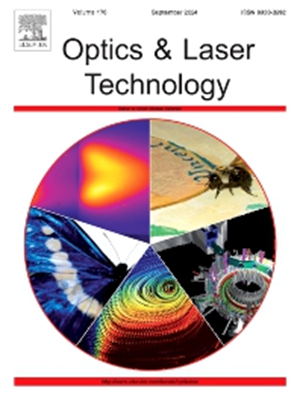YOLO-MST: Multiscale deep learning method for infrared small target detection based on super-resolution and YOLO
IF 4.6
2区 物理与天体物理
Q1 OPTICS
引用次数: 0
Abstract
With the advancement of aerospace technology and the increasing demands of military applications, the development of low false-alarm and high-precision infrared small target detection algorithms has emerged as a key focus of research globally. However, the traditional model-driven method is not robust enough when dealing with features such as noise, target size, and contrast. The existing deep-learning methods have limited ability to extract and fuse key features, and it is difficult to achieve high-precision detection in complex backgrounds and when target features are not obvious. To solve these problems, this paper proposes a deep-learning infrared small target detection method that combines image super-resolution technology with multi-scale observation. First, the input infrared images are preprocessed with super-resolution and multiple data enhancements are performed. Secondly, based on the YOLOv5 model, we proposed a new deep-learning network named YOLO-MST. This network includes replacing the SPPF module with the self-designed MSFA module in the backbone, optimizing the neck, and finally adding a multi-scale dynamic detection head to the prediction head. By dynamically fusing features from different scales, the detection head can better adapt to complex scenes. The [email protected] detection rates of this method on three datasets IRIS, SIRST and SIRST+ reach 99.5%, 96.4% and 91.4% respectively, more effectively solving the problems of missed detection, false alarms, and low precision.
随着航空航天技术的发展和军事应用需求的不断增加,开发低误报、高精度的红外小目标检测算法已成为全球研究的重点。然而,传统的模型驱动方法在处理噪声、目标大小和对比度等特征时不够稳健。现有的深度学习方法提取和融合关键特征的能力有限,很难在复杂背景和目标特征不明显的情况下实现高精度检测。为了解决这些问题,本文提出了一种结合图像超分辨率技术和多尺度观测的深度学习红外小目标检测方法。首先,对输入的红外图像进行超分辨率预处理,并进行多重数据增强。其次,在 YOLOv5 模型的基础上,我们提出了一种名为 YOLO-MST 的新型深度学习网络。该网络包括用自主设计的 MSFA 模块替换骨干网中的 SPPF 模块,优化颈部,最后在预测头中加入多尺度动态检测头。通过动态融合不同尺度的特征,检测头可以更好地适应复杂场景。该方法在 IRIS、SIRST 和 SIRST+ 三个数据集上的 [email protected] 检测率分别达到 99.5%、96.4% 和 91.4%,更有效地解决了漏检、误报和精度低的问题。
本文章由计算机程序翻译,如有差异,请以英文原文为准。
求助全文
约1分钟内获得全文
求助全文
来源期刊
CiteScore
8.50
自引率
10.00%
发文量
1060
审稿时长
3.4 months
期刊介绍:
Optics & Laser Technology aims to provide a vehicle for the publication of a broad range of high quality research and review papers in those fields of scientific and engineering research appertaining to the development and application of the technology of optics and lasers. Papers describing original work in these areas are submitted to rigorous refereeing prior to acceptance for publication.
The scope of Optics & Laser Technology encompasses, but is not restricted to, the following areas:
•development in all types of lasers
•developments in optoelectronic devices and photonics
•developments in new photonics and optical concepts
•developments in conventional optics, optical instruments and components
•techniques of optical metrology, including interferometry and optical fibre sensors
•LIDAR and other non-contact optical measurement techniques, including optical methods in heat and fluid flow
•applications of lasers to materials processing, optical NDT display (including holography) and optical communication
•research and development in the field of laser safety including studies of hazards resulting from the applications of lasers (laser safety, hazards of laser fume)
•developments in optical computing and optical information processing
•developments in new optical materials
•developments in new optical characterization methods and techniques
•developments in quantum optics
•developments in light assisted micro and nanofabrication methods and techniques
•developments in nanophotonics and biophotonics
•developments in imaging processing and systems

 求助内容:
求助内容: 应助结果提醒方式:
应助结果提醒方式:


